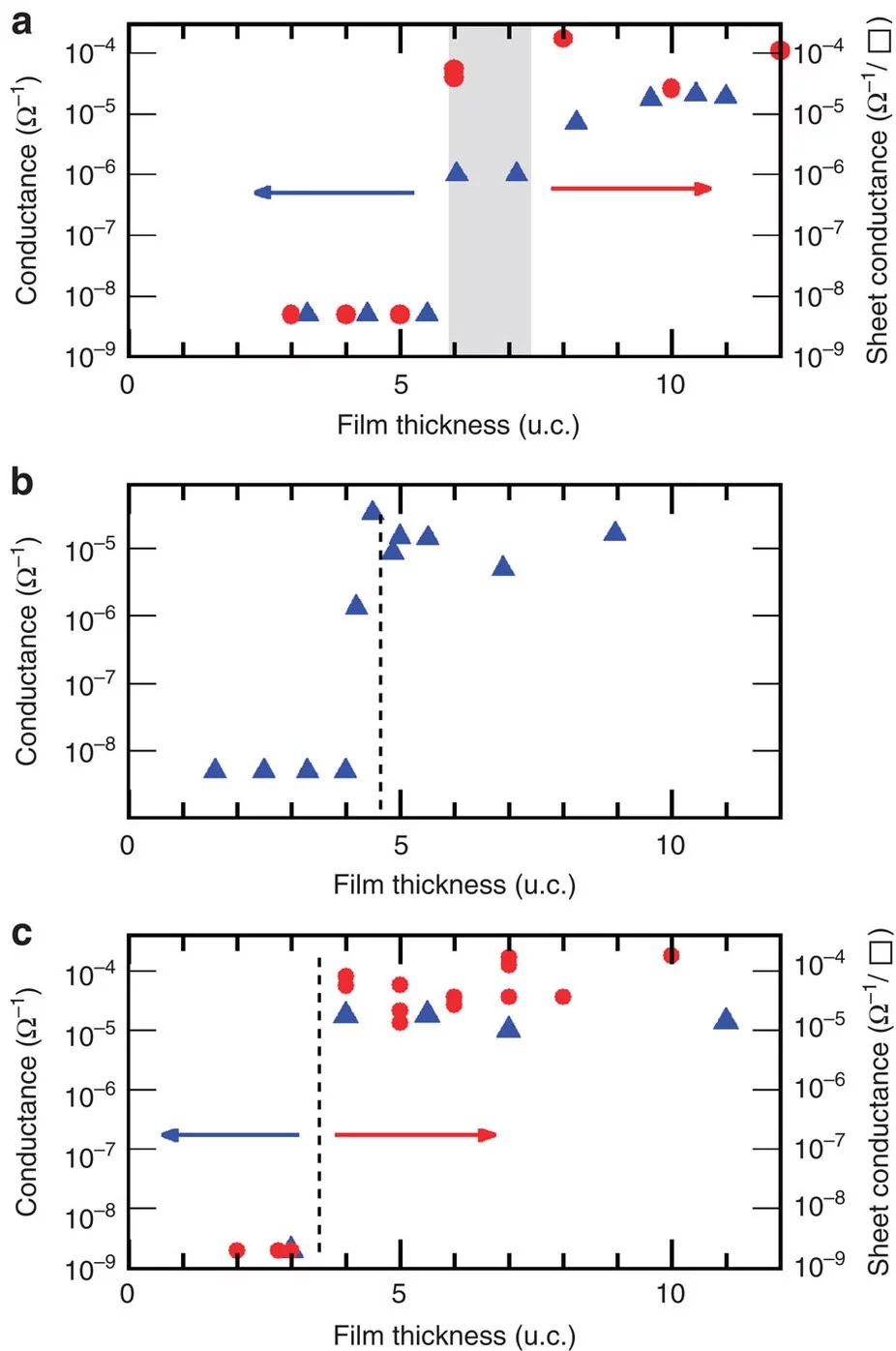Abstract:
The physical mechanisms responsible for the formation of a two-dimensional electron gas at the interface between insulating SrTiO3 and LaAlO3 have remained a contentious subject since its discovery in 2004. Opinion is divided between an intrinsic mechanism involving the build-up of an internal electric potential due to the polar discontinuity at the interface between SrTiO3 and LaAlO3, and extrinsic mechanisms attributed to structural imperfections. Here we show that interface conductivity is also exhibited when the LaAlO3 layer is diluted with SrTiO3, and that the threshold thickness required to show conductivity scales inversely with the fraction of LaAlO3 in this solid solution, and thereby also with the layer's formal polarization. These results can be best described in terms of the intrinsic polar-catastrophe model, hence providing the most compelling evidence, to date, in favour of this mechanism.
Keywords: pulsed laser deposition; conducting interfaces; SrTiO3, LaAlO3; polar catastrophy;
Facility: ENE, SLS, LDM, U. Geneva, U. Liege, LMX, Thin Films and Interfaces
Reference: M. L. Reinle-Schmitt, C. Cancellieri, D. Li, D. Fontaine, M. Medarde, E. Pomjakushina, C.W. Schneider, S. Gariglio, Ph. Ghosez, J.-M. Triscone, P. R. Willmott, Nat. Commun. 3:932 (2012)
Read full article: here
Facility: ENE, SLS, LDM, U. Geneva, U. Liege, LMX, Thin Films and Interfaces
Reference: M. L. Reinle-Schmitt, C. Cancellieri, D. Li, D. Fontaine, M. Medarde, E. Pomjakushina, C.W. Schneider, S. Gariglio, Ph. Ghosez, J.-M. Triscone, P. R. Willmott, Nat. Commun. 3:932 (2012)
Read full article: here

